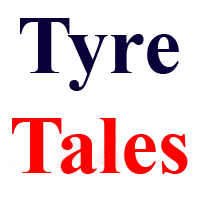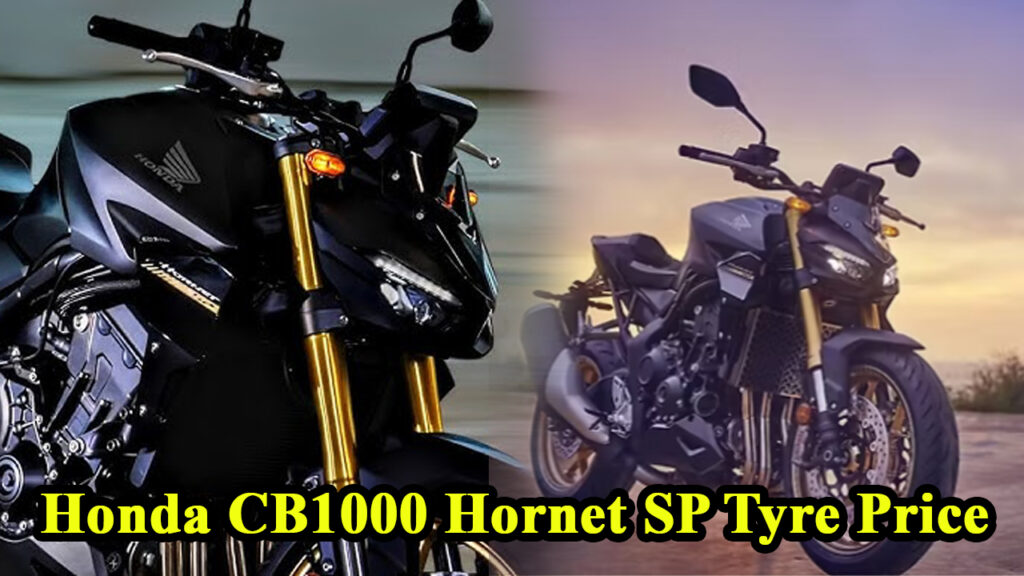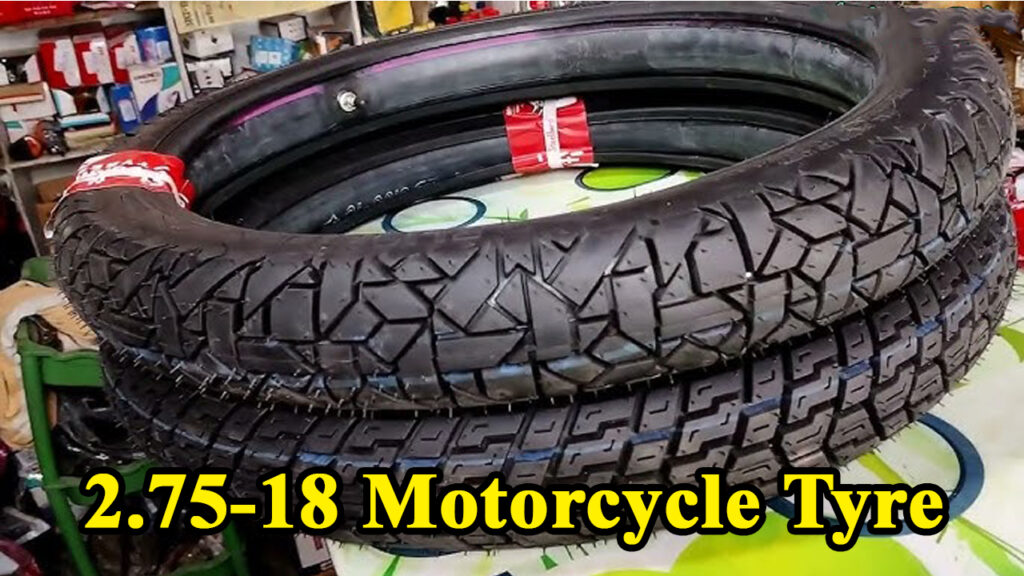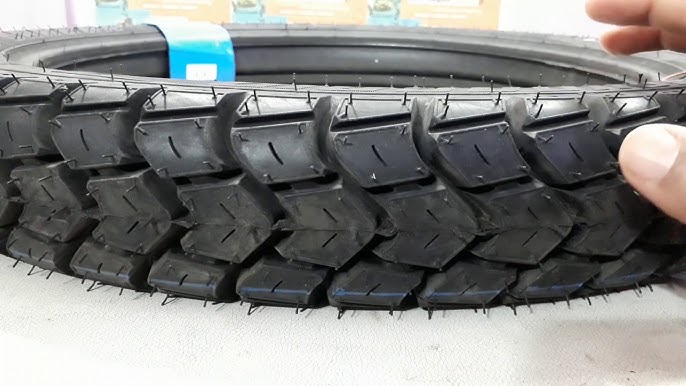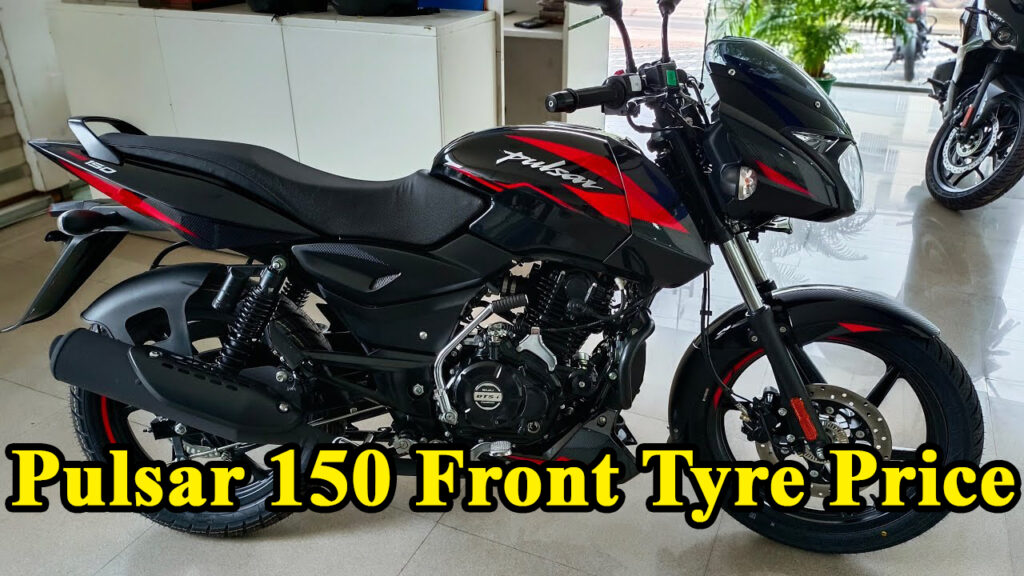Before we talk about prices, let’s understand the essential specifications for the Honda CB1000 Hornet SP’s tyres. These are critical for ensuring proper fitment and maintaining the bike’s intended handling characteristics.
- Front Tyre Size: 120/70ZR17M/C (58W)
- Rear Tyre Size: 180/55ZR17M/C (73W)
Decoding the Numbers:
- 120/70 (Front) and 180/55 (Rear): These represent the width of the tyre in millimeters (120mm front, 180mm rear) and the aspect ratio (the height of the sidewall as a percentage of the width).
- ZR: This indicates a radial construction tyre, designed for high-speed performance, and also specifies a Z-rated tyre, meaning it’s capable of speeds over 240 km/h (149 mph).
- 17M/C: This means it’s for a 17-inch wheel, designed for motorcycles.
- (58W) and (73W): These are the load and speed ratings. 58 and 73 are load indices (indicating the maximum weight the tyre can carry), while ‘W’ signifies a maximum speed rating of 270 km/h (168 mph).
Stock Tyres: What Comes Out of the Crate
The Honda CB1000 Hornet SP is expected to come equipped with high-performance sport tyres as standard. Based on information from Honda, the stock tyres could be either:
- Bridgestone Battlax Hypersport S22F
- Dunlop Sportmax Roadsport 2
These are excellent choices, offering a balanced performance for both street and spirited riding. They provide good grip in dry and wet conditions, offering a comfortable ride for daily commutes while being capable enough for occasional track days.
Aftermarket Tyre Options & Price Ranges in India
When it comes to replacing your tyres, the Indian market offers a good selection from various international brands. The price of tyres for the CB1000 Hornet SP can vary significantly based on the brand, tyre model (sport, sport-touring, track-focused), and the dealer. Generally, you’re looking at a range of ₹17,000 to ₹35,000+ for a set (front and rear) of premium tyres.
Let’s break down some popular and highly-regarded options, along with their approximate price ranges in India (prices are indicative and can fluctuate):
1. Sport-Oriented Tyres: For the Thrill Seekers
These tyres prioritize maximum grip, quick turn-in, and excellent feedback, making them ideal for aggressive street riding and occasional track use. They typically have a softer compound, which means they might wear out faster.
Michelin Power 6:
A fantastic all-rounder for sport riding, offering superb grip in dry and wet conditions with good longevity for a sport tyre.
- Front (120/70ZR17): ₹17,000 – ₹18,500
- Rear (180/55ZR17): ₹22,000 – ₹24,000
- Set Price: Approximately ₹39,000 – ₹42,500
Personal Touch: I recall riding with a set of Michelin Power series tyres on a litre-class naked bike through the winding roads of the Western Ghats near Pune. The confidence they inspired, especially when leaning into a hairpin in a sudden drizzle, was truly remarkable. The consistent grip and predictable feedback allow you to push your limits with a sense of security.
Pirelli Diablo Rosso IV Corsa:
A step up in performance from the standard Rosso IV, offering enhanced grip and handling, particularly suited for aggressive riding.
- Front (120/70ZR17): ₹19,000 – ₹21,000
- Rear (180/55ZR17): ₹27,000 – ₹30,000 (Note: The 180/60ZR17 for the Rosso IV Corsa is more commonly listed, but the 180/55ZR17 should also be available).
- Set Price: Approximately ₹46,000 – ₹51,000
Case Study: A friend of mine, a seasoned track enthusiast who regularly takes his CBR1000RR to the MMRT (Madras International Circuit) in Chennai, swears by Pirelli Rosso Corsa tyres. He often says, “These tyres stick like glue, even when the tarmac is scorching hot. The lean angle you can achieve is just phenomenal.” This highlights their prowess in high-performance scenarios.
Bridgestone Battlax Hypersport S23:
The latest iteration of Bridgestone’s popular sport tyre, offering improved wet grip and better wear life compared to its predecessor, the S22.
- Front (120/70ZR17): ₹13,000 – ₹15,000 (often more competitively priced)
- Rear (180/55ZR17): ₹16,000 – ₹18,000
- Set Price: Approximately ₹29,000 – ₹33,000
Local Reference: In Bengaluru, I’ve noticed many sportbike owners at popular motorcycle meet-up spots like Shanti Nagar or Bannerghatta Road discussing the S23s. They often praise their value proposition, offering excellent performance without breaking the bank, making them a popular choice for daily riders who also enjoy weekend canyon carving.
2. Sport-Touring Tyres: For the Long Haulers
If your riding involves more highway miles, touring, or you simply prefer better longevity without sacrificing too much grip, sport-touring tyres are an excellent choice.
Metzeler Roadtec 02:
Designed for high-displacement road motorcycles, focusing on versatility, performance, and mileage.
- Front (120/70ZR17): ₹14,000 – ₹16,000
- Rear (180/55ZR17): ₹18,000 – ₹20,000
- Set Price: Approximately ₹32,000 – ₹36,000
Michelin Road 6:
Known for its exceptional wet weather performance, comfort, and extended mileage, making it a favorite for touring enthusiasts.
- Front (120/70ZR17): ₹18,000 – ₹20,000
- Rear (180/55ZR17): ₹25,000 – ₹27,000
- Set Price: Approximately ₹43,000 – ₹47,000
3. Budget-Friendly Options (with caveats)
While the Hornet SP deserves premium rubber, if budget is a serious constraint, some domestic brands offer options. However, it’s crucial to understand that these might not offer the same level of performance, particularly in terms of high-speed stability, wet grip, or longevity, as the international premium brands.
CEAT Zoom / MRF Zapper (Sport sizes):
You might find options in the 180/55-17 and 120/70-17 range from these brands.
- Set Price: Approximately ₹8,000 – ₹12,000
Important Value: While these tyres are significantly cheaper, for a motorcycle with the performance capabilities of the CB1000 Hornet SP, investing in premium tyres is a matter of safety and performance. The grip levels and feedback provided by these budget options will be noticeably lower, especially at higher speeds or in challenging conditions. My personal recommendation, and that of most experts, is to never compromise on tyres for a high-performance motorcycle.
Factors Influencing Tyre Price
Several factors contribute to the varying prices of motorcycle tyres:
- Brand Reputation & Technology: Established international brands like Michelin, Pirelli, and Bridgestone invest heavily in R&D, leading to superior rubber compounds, tread patterns, and construction technologies. This innovation naturally comes at a higher price.
- Tyre Compound: Softer, stickier compounds (found in sport and track tyres) offer better grip but wear out faster, influencing the price. Harder compounds (in touring tyres) offer more mileage but less ultimate grip.
- Construction (Radial vs. Bias-ply): All tyres for the CB1000 Hornet SP will be radial, which are more expensive to produce than bias-ply tyres due to their complex construction and higher performance capabilities.
- Import Duties & Taxes: India has significant import duties on automotive components, which directly impact the final retail price of imported tyres. This is a major reason why international brands cost more here than in their origin countries.
- Dealer Margins & Location: Prices can vary between authorized dealers, independent tyre shops, and online retailers. Larger cities might have more competitive pricing due to higher demand and more outlets.
When to Change Your Tyres?
Beyond obvious damage or punctures, here are key indicators it’s time for new rubber:
- Tread Wear Indicators (TWIs): Most tyres have small raised bars in the tread grooves. When the tyre tread wears down to the level of these indicators, it’s time to replace them.
- Reduced Grip: If you notice your bike losing traction more easily, especially in corners or under braking, your tyres are likely past their prime.
- Cracking/Dry Rot: Small cracks on the sidewall or between tread blocks indicate the rubber is deteriorating due to age or exposure to elements.
- Age: Even with good tread, tyres have a shelf life. Most manufacturers recommend replacing tyres every 5-7 years, regardless of mileage, as the rubber compound hardens and loses its grip properties. I once had a tyre with decent tread, but it was over 6 years old. On a spirited ride through a twisty section on the outskirts of Hyderabad, I felt a distinct lack of confidence, the bike just didn’t “feel” planted. Swapping out that old tyre for a fresh one made an immediate and noticeable difference in handling and stability.
The Value Proposition: Why Invest in Premium Tyres?
Think of tyres as your bike’s only point of contact with the road. Every single input you give – acceleration, braking, turning – is transmitted through that small contact patch. For a high-performance machine like the Honda CB1000 Hornet SP, the benefits of premium tyres far outweigh the initial cost:
- Enhanced Safety: Superior grip in both dry and wet conditions drastically reduces braking distances and improves cornering stability, minimizing the risk of accidents.
- Improved Handling & Confidence: Premium tyres offer better feedback, allowing you to feel what the bike is doing and react more precisely. This translates to greater confidence, especially when pushing the bike’s limits.
- Optimized Performance: The Hornet SP is built for performance. Cheap tyres will bottleneck its capabilities, making it feel less responsive and less enjoyable to ride.
- Predictable Behavior: High-quality tyres behave predictably under various conditions, making your ride smoother and more enjoyable.
Conclusion: Your Ride, Your Responsibility
The Honda CB1000 Hornet SP is a phenomenal motorcycle, a testament to Honda’s engineering prowess. It offers an exhilarating riding experience, but that experience is only as good as the tyres gripping the tarmac. While the initial cost of premium tyres might seem substantial, consider it an investment in your safety, riding pleasure, and the overall longevity of your motorcycle.
My advice, based on years of riding and observing other riders, is simple: don’t compromise on rubber. It’s the most critical safety feature on your bike. Whether you choose the well-balanced stock options or venture into the world of sport-oriented or sport-touring aftermarket tyres, ensure they meet the specific requirements of the CB1000 Hornet SP and align with your riding style. A fresh set of quality tyres can transform your riding experience, turning every journey into a confident and thrilling adventure.
FAQ: Honda CB1000 Hornet SP Tyres
Q1: What are the exact tyre sizes for the Honda CB1000 Hornet SP? A1: The front tyre size is 120/70ZR17M/C (58W), and the rear tyre size is 180/55ZR17M/C (73W).
Q2: What brands of tyres come as stock on the Honda CB1000 Hornet SP? A2: The Honda CB1000 Hornet SP is typically equipped with Bridgestone Battlax Hypersport S22F or Dunlop Sportmax Roadsport 2 tyres from the factory.
Q3: What is the average price range for a set of good quality tyres for the CB1000 Hornet SP in India? A3: For premium international brands, a set of tyres (front and rear) for the Honda CB1000 Hornet SP typically costs between ₹30,000 to ₹50,000 in India, depending on the brand and model.
Q4: Can I use sport-touring tyres on my CB1000 Hornet SP, or should I stick to pure sport tyres? A4: Yes, you can absolutely use sport-touring tyres. If your riding involves more highway cruising, longer trips, or you prioritize longevity and wet-weather performance, sport-touring tyres like the Michelin Road 6 or Metzeler Roadtec 02 are excellent choices. They offer a good balance of grip and mileage.
Q5: How often should I replace the tyres on my Honda CB1000 Hornet SP? A5: Tyre replacement depends on several factors, including riding style, mileage, and age. Generally, you should consider replacing them when the tread depth reaches the wear indicators, if you notice cracks or deterioration, or if the tyre is older than 5-7 years, regardless of tread wear. Aggressive riding will naturally lead to faster wear.
